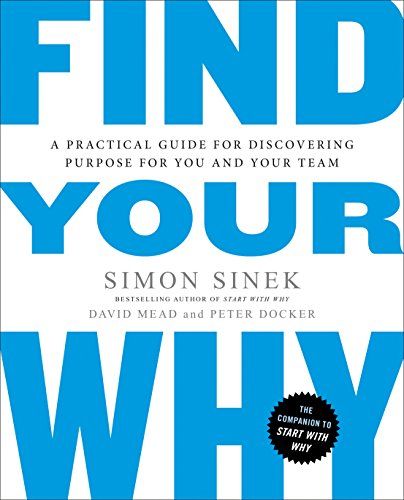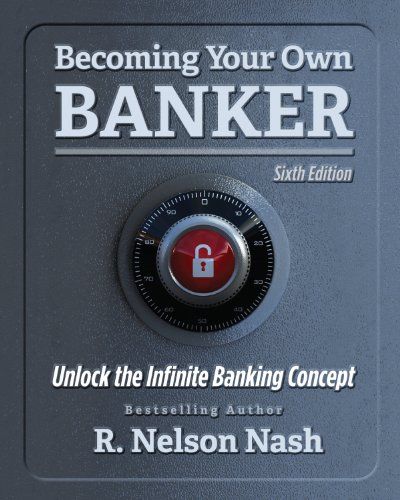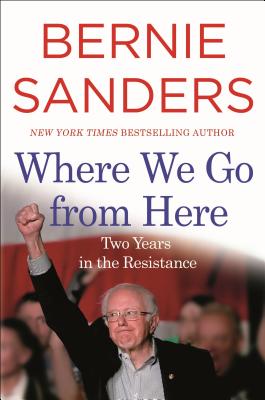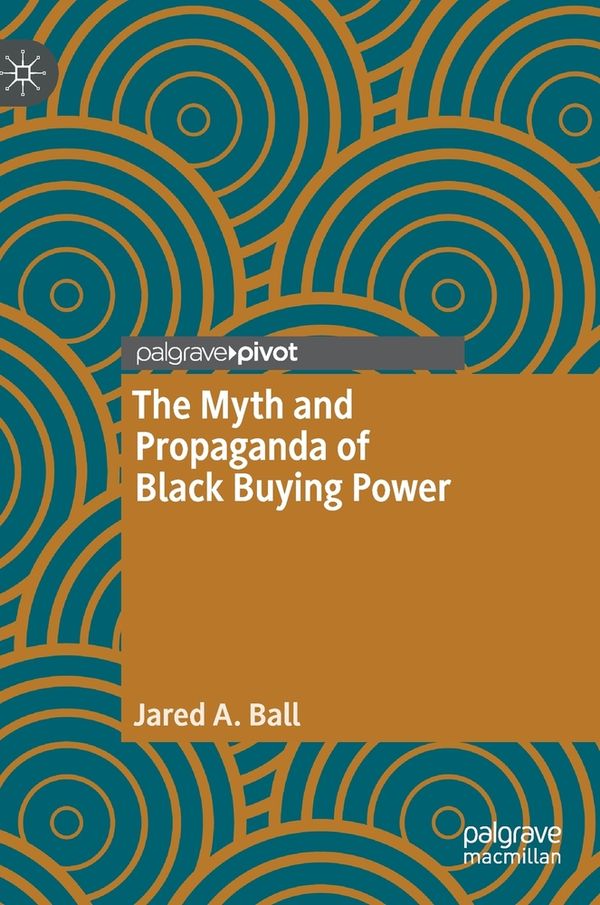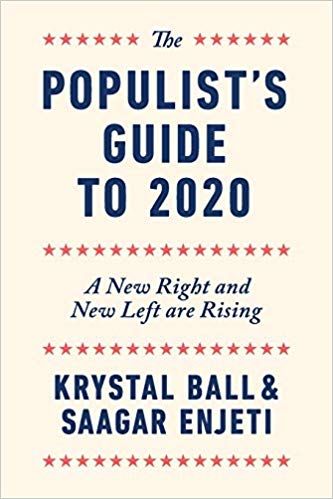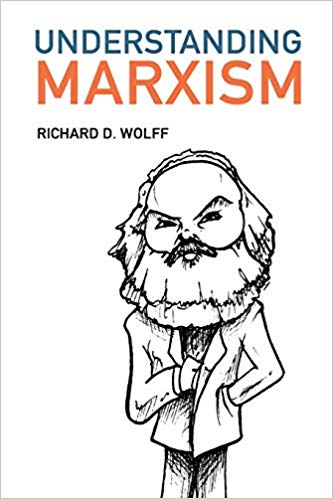Simon Sinek, David Mead, Peter Docker (2017)
Visit book's Bookshop Page for details and support local, independent book stores.
People and organizations who know their WHY enjoy greater, long-term success, command greater trust and loyalty among employees and customers and are more forward-thinking and innovative than their competition.
Your vision is only actionable if you say it out loud. If you keep it to yourself, it will remain a figment of your imagination.
The difference between happiness and fulfillment is the difference between liking something and loving something.
Happiness comes from what we do. Fulfillment comes from why we do it.
The point is, money isn’t the thing that drives people. WHY goes much deeper to understanding what motivates and inspires us. It is the purpose, cause or belief that drives every organization and every person’s individual career.
Leading with WHY has a deeper, more emotional and ultimately more influential value.
Companies that inspire, companies that command trust and loyalty over the long term, are the ones that make us feel we’re accomplishing something bigger than just saving a buck.
When we align emotionally with our customers and clients, our connection is much stronger and more meaningful than any affiliation based on features and benefits. That’s what starting with WHY is all about.
Once you understand your WHY, you’ll be able to clearly articulate what makes you feel fulfilled and to better understand what drives your behavior when you’re at your natural best. When you can do that, you’ll have a point of reference for everything you do going forward. You’ll be able to make more intentional choices for your business, your career and your life. You’ll be able to inspire others to buy from you, work with you and join your cause.
As soon as a company’s WHY is put into words, the culture becomes a little more tangible and the right decision becomes clear immediately.
The WHY is a tool that can bring clarity to that which is fuzzy and make tangible that which is abstract. Used properly, it can be used to hire, to develop strategies and to communicate more clearly (internally and externally). The WHY can help set a vision to inspire people. The WHY can guide us to act with purpose, on purpose.
Step 1 - Gather Stories and Share Them:
Each of us has only one WHY. It’s not a statement about who we aspire to be; it expresses who we are when we are at our natural best. If, like Steve the steel salesman, you’re already unconsciously living your WHY, then spelling it out for yourself will turn it into an even more powerful tool. And if you’re struggling to live your WHY, then finally understanding your purpose, cause or belief can help you change course and realign with a new perspective, a new role or perhaps even a new company to help you find the feeling of fulfillment that may have eluded you thus far.
At its core, the WHY is an origin story.
For individuals, our WHY is fully formed by our late teens. To uncover our WHY we must bring together our standout memories—our defining moments—and examine them to find the connections.
Leaders are the ones who have the courage to go first and open a path for others to follow.
Rediscovering the details, the feelings, the conversations, the lessons learned will offer clues to who you are and what your WHY is. The more stories you can recover and share, the more data you’ll compile. And the more data you can draw on, the more easily you’ll begin to see the recurring ideas or themes.
What’s important is the quality of the memory, the specific details you remember and the strong emotion you feel as you tell the story to someone else. Because it is very difficult to be objective and see the golden thread that connects our stories, we suggest, whether you follow the individual or the tribe process, that you work with a partner or with a facilitator, respectively.
You’ll come up with as many specific, impactful memories as you can—at least ten. Once you’ve got them all down, you’ll choose about five or six that made the biggest difference in your life and share them in as much detail as you can.
Step 2 - Identify Themes:
Reconnecting with your past to discover your WHY can be fun in that same kind of way. As you pan for your stories and share them, themes will start to emerge, insights about yourself or your team that you may never have expressed before. As the process unfolds, one or two of those nuggets will seem to shine brighter than all the others. They will feel bigger, more important. They will shine so brightly that you’ll point to them and say, “That’s me—that’s who I am,” or “That’s us—that’s our team.” These themes become the foundation of your Why Statement.
Step 3 - Draft and Refine a Why Statement:
With one or two shiny nuggets in hand, you’re ready to take a crack at your Why Statement. Try to make yours: simple and clear actionable focused on the effect you’ll have on others, and expressed in affirmative language that resonates with you. Eventually, you will put your Why Statement into this format: TO...SO...THAT.
One sentence is the absolute lowest common denominator. One sentence is usually more honest. And if you can wrestle your WHY into one sentence, you’re much more likely to remember it—and to act on it.
The first blank represents the contribution you make to the lives of others. The second blank represents the impact of your contribution.
It is a statement of your value at work as much as it is the reason your friends love you. We don’t have a professional WHY and personal WHY. We are who we are wherever we are. Your contribution is not a product or a service. It’s the thing around which everything you do—the decisions you make, the tasks you perform, the products you sell—aligns to bring about the impact you envision.
Here’s how Simon Sinek expresses his WHY:
To inspire people to do the things that inspire them so that, together, we can change our world. The impact Simon seeks is for each of us to change our world, in big and small ways, for the better.
Fantastic! But this goal is too broad and abstract on its own. It’s his contribution, what he actually does on Monday morning to make change happen, that gives direction to his desired impact. The contribution part—to inspire others—gives Simon the focus he needs.
The “TO SO THAT ” format works for everyone. It’s the simplest way to codify our calling. Whether our WHY is individual or tribal, when we work with a clear WHY in mind, we show up every single day with the feeling that we are part of something bigger than ourselves.
At the end of your time together, the goal is to have a draft version of their Why Statement in hand. This will serve as a filter for the decisions they make so that they can find as much joy and fulfillment in their work and career as possible.
At its core, the WHY is an origin story. Who we are is the sum total of all the experiences we’ve had growing up—the lessons we learned, the teachers we had and the things we did. In order to help your companion discover their WHY, you’ll need to listen to stories from their past. Their WHY represents who they are at their natural best and will be revealed through specific stories and experiences that affected their life and shaped who they are.
Active listening is about hearing more than the words that are said. It’s about understanding the meaning, motivation or emotion behind those words. Some of the techniques of active listening are simple: Make eye contact; acknowledge verbally and nonverbally what the other person says (e.g., offer affirmation like, “go on,” or nod your head as you understand things); invite them to say more about what happened or how they feel about it. Pay particular attention to nonverbal cues. Facial expressions, body language and even long pauses all serve as clues as to how the story makes them feel.
You’ll know you’re getting somewhere when they begin talking less about what happened and more about how they felt about what happened.
The better you capture the themes of how they felt, the easier it will be to put together the Why Statement that feels really authentic to them.
With that in mind, do what you can to find out what your companion is giving someone else or receiving in each story (the contribution) and what difference it may have made to them or others (the impact). You’ll begin to see a pattern that will help you understand the contribution and impact of their WHY. There is almost always some sort of emotional cue, verbal or nonverbal, when they touch on one or both of these themes.
If you do have to work remotely, settle down in a quiet, distraction-free location and encourage your partner to do the same. And set aside enough time—at least three hours. Yes, that’s a big commitment, but there is no shortcut to discovering your WHY.
Here are a few guidelines for gathering the type of stories that will lead you to your WHY. Think of specific experiences and people in your life that have really shaped who you are today.
If the event meant something to you, helped you become who you are, taught you something or made you proud, write it down.
Since your WHY comes from your past, which is the period from your birth until yesterday, you can draw your stories from any time in between those markers. The memories may come from school, home, work or any other area of your life.
Our struggles are the short-term steps we must take on our way to long-term success.
The goal of the story-gathering exercise is to end up with at least five stories that you consider the most impactful of your life. The more stories you have, the easier it will be for your partner to detect the patterns and themes that will lead to your WHY. Remember that each story must be about a specific time, place or moment. The more specific you are, the more you’ll feel an emotional connection to that memory. And it’s this emotional connection that will lead to your WHY.
Draw a horizontal line across the middle of a piece of paper. Stories you put above the line are those you consider happy memories: moments you’d enthusiastically relive. Stories below the line are events that you wouldn’t necessarily want to relive but that impacted your life and shaped who you are today. Write a few words to encapsulate each story as you fill out the chart. The higher you plot the stories above the line, the more fulfilling and positive they were. The lower you plot the stories below the line, the more challenging or difficult they were. You’ll probably end up with stories at various levels.
One little trick that can help the process is to circle the three most impactful stories you have and tell those to your partner first. By focusing on the most impactful ones, you’ll avoid the temptation to tell stories that just seem to tie together.
Of all the stories you could have shared with me, what specifically is it about this one that made you choose to share it? You can feel uncomfortable to share this much about yourself, but you don’t have to abandon your comfort zone entirely—we just want you to push the boundaries a bit. If some stories are just too personal to reveal, then don’t tell them. But for the ones you do choose to share, know that the more you open up, the easier it will be for your partner to see the significant patterns.
Our WHY is our purpose, cause or belief—the driving force behind everything we do. Our HOWs are the actions we take when we are at our natural best to bring our WHY to life. Our WHATs are the tangible manifestation of our WHY, the actual work we do every day.
Bottom line is when we focus on our strengths and lean in to the strengths of others, we can make the impossible possible.
The greatest contribution of a leader is to make other leaders.
Start using your HOWs as filters for making important decisions. Though not every relationship, project or partnership will be in perfect alignment with all your HOWs, you’ll have a good idea where challenges or tensions might arise. Knowing these can give you an opportunity to talk about potential issues in advance, giving you and whomever you collaborate with the best possible setup for the partnership to thrive.
If we expect people to live the core values of an organization, we have to be able to tell them what those values look like in action. In other words, the HOWs must be simple and actionable.
Here is your road map for the process of articulating your HOWs. The template is the same for both individuals and tribes.
- NARROW REMAINING THEMES
- STATE YOUR HOWs
- PROVIDE CONTEXT
As we explained earlier, HOWs must be actions because they are the things you do to bring your WHY to life. Traits and attributes, such as “honesty,” or adjectives, such as “determined,” are not actions. We turn themes into HOWs by making them actionable.
We have a few personal preferences we’ll share with you. We don’t like to use “Be” verbs, because they don’t feel active to us.
We also advise you to drop the gerund. Take the “ing” off of your verbs. It’s more inclusive and a clearer instruction.
Make sure the words you use resonate with you and remind you of the stories behind them. It’s this emotional connection that will inspire you to put these HOWs into action.
Once you’ve articulated your HOWs, you can strengthen your relationship to them by writing a short description that gives each one some context and suggests what it might look like in practice. The descriptions don’t have to be complicated. In fact, keep them as simple as you can. That makes them easier to put into action.
Here are what descriptions to the HOWs looked like for this individual:
- Find the positive in everything—When things look like they’re going wrong, look for what’s going right.
- Connect with people in meaningful ways—Make relationships personal and let people know you care about them.
- Make others feel safe—Extend trust to others and let people know you have their back.
- Learn something from everyone—Be open to the ideas and points of view of others; they all have something to teach us.
- Look for creative solutions—Assume there is always a solution and don’t give up until you find it.
We find that the best place to practice is among strangers. When meeting someone for the first time, they almost always ask, “What do you do?” This is your opportunity to start with WHY. From this point forward, strangers on planes, chit-chatters at cocktail parties and everyone in between represent your metaphorical bicycle.
DANGER! DANGER!: Once you know your WHY, you have a choice to live it every day. Living it means consistently taking actions that are in alignment with the things you say. If you say one thing and do another too frequently, you will lose the trust of others. Our actions either add to or take away from the trust and loyalty others feel toward us. When the things we say and the things we do are aligned with what we believe, we are fully living our WHY. Will you choose to take a stand?
When you start with WHY, it attracts people who believe what you believe and repels people who don’t.
Communicating our WHY is an essential part of identifying the people in the world who believe what we believe, who will be our trusted friends, loyal clients or customers, dedicated employees and inspired partners in bringing our WHY to life.
When you keep your WHY on a piece of paper in a drawer, you have a piece of paper in a drawer. When you live your WHY, you thrive and so do the people around you.
To keep the WHY alive over time, we must keep it front and center, communicating it and committing to living it—on purpose, with purpose—every day. Otherwise, a WHY can fizzle, fade or be forgotten. In an organization, when the WHY goes fuzzy, we call this the “split.”
Although we may not be able to articulate the change, we can all recognize when our organization experiences the split. Symptoms include increased stress, decreased passion and lower productivity, engagement and innovation. People start saying things like “It used to feel like a family around here. Now it just feels like a job.” Whereas people were formerly inspired to stay with the organization, now executives and upper management must actively work to retain them, using tactics such as salary increases, bonuses tied to delivery and share options available only to individuals who’ll commit to five more years with the organization. This kind of money-based manipulation can work in the short term but inevitably fails in the long run. Eventually, employee trust and loyalty break down, performance suffers, numbers drop, layoffs begin and the entire culture of the organization begins to erode.
Whether you are proactively protecting a thriving, long-lived WHY or need to resuscitate a WHY that has been neglected or ignored, one of the most powerful tools at your disposal is also the simplest: storytelling. This is true whether you are an organization or an individual. Storytelling is the way knowledge and understanding have been passed down for millennia, since long before the invention of written language. Storytelling is part of what it is to be human. And the best stories share our values and beliefs. Those stories are powerful. Those stories inspire. Those stories are both the source of our WHY and the fuel that keeps our WHY alive. That’s the reason companies that understand the importance of living their WHY make it easy for their teams to fortify themselves with stories.
Family inspires great love and commitment, and most of us want very much to care for our spouse or partner and our children. But a WHY is who we are wherever we are—not just at home, but also at work or out with friends. Though it may seem strange to speak in these terms, family is actually a WHAT. Your WHY will come not from talking about your family, but from talking about the feelings your family evokes in you.
If you feel as if you have one WHY at work and a different one at home (or in some other context), you may be focusing too much on what you are doing at each respective place. Instead, think about the common factors at home and at work that leave you feeling inspired and fulfilled. That’s where you’ll get clarity of your WHY.
If we feel at a certain point in our lives that our WHY has fundamentally changed, there are a few possible reasons. The most common is that we didn’t truly know or understand our WHY before, often because we were too focused on WHATs. Or perhaps we’ve had an experience that felt transformative—a personal struggle, a tragedy, the death of a loved one. While such events can certainly affect us deeply, they don’t change who we are at our core. If these events inspire us to reconsider what’s important, to live or think in a more positive way, that doesn’t mean our WHY has changed. It means we have gained a deeper understanding of ourselves and have begun to live in closer alignment with our WHY. Another perspective on this is that a challenge or loss can throw us temporarily out of balance. Once we regain our balance, we will see that our WHY is fundamentally the same as it always was.
Those who turn their WHYs to destructive ends have chosen to manifest their purpose, cause or belief through results (WHATs) that hurt, disrespect or otherwise do not serve others.
The happiness in serving ourselves is real but often fleeting; the fulfillment in serving others is lasting. The problem comes when there’s a lack of balance between the pursuit of happiness and the pursuit of fulfillment.
Ironically, people whose WHY is in service to others, rather than for themselves, are the ones who ultimately best serve themselves, because in the end they experience the deepest fulfillment.
When we are truly connected to our WHY and the stories from our past that have led to its discovery, it doesn’t matter if our WHY sounds like someone else’s. It’s ours and it has deep meaning to us. It represents who we are at our very best.
Your first step should be to positively influence those around you every day. Start by living your WHY the best way you can. It’s just possible that, if you do, things will begin to change for the better.
Just remember, moving toward something (e.g., a situation in which you can thrive and live your WHY) is always better than moving away from something (e.g., a situation that isn’t working for
The first: if you’re implying that there’s a tangible WHAT that’s necessary for you to live your WHY, you’re wrong. None of us needs any specific job, position, title, technology or piece of equipment in order to effect the change we want to see in the world.
And organizations that define their WHY as a result tend not to be great places to work. Profit-driven companies may come out financially ahead of WHY-driven organizations in the short term, but their success is unsustainable. Over the long term, they cannot command the kind of loyalty, trust and innovation that an organization with a purpose can.
What makes a WHY powerful is its authenticity. Neither employees nor clients are fooled when an organization attempts to manufacture a WHY to suit what they feel customers want to hear. This is manipulation. The people you do business with, and the people who work with you, will sense a disconnect. Trust and loyalty will diminish (if they ever existed). When that happens, the company often resorts to discounts and other forms of manipulation to try to convince customers and employees to stay. This may work in the short term but it has no hope of long-term success. This is not to say that a WHY-based organization can’t use marketing effectively. Of course it can! In fact, when marketing uses the WHY as its source, it works quite well. An organization’s branding simply becomes an external expression of its WHY, a proof of the company’s culture.
Three ways to ask good questions: Ask open-ended questions (i.e., the kind that can’t be answered with a “yes” or a “no”). Open-ended questions let the other person lead you. Avoid questions that start with “why.” It’s easier to answer a question that starts with “what.” Ask “what is it about that story that really matters to you?” Sit in silence. If someone is struggling to answer your question, don’t fill the silence with another question or a suggested answer. Just wait. Emotions are hard to articulate and it may take the person a little time to find the right words.
Focus on feelings. In the stories, what happened is less important than how the person felt about what happened.
Ask questions to dig deeper and uncover feelings. Here are some effective questions:
- When that happened, how did it make you feel?
- Who else was involved in this story and how did they make a difference to you?
- What is it about this experience that you absolutely loved?
- You’ve probably felt this same feeling before. What is it about this particular story that makes it special?
- How did this experience affect you and who you’ve become?
